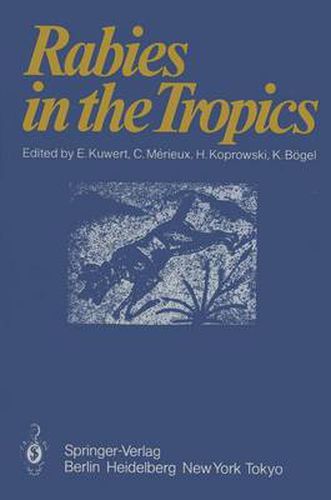Readings Newsletter
Become a Readings Member to make your shopping experience even easier.
Sign in or sign up for free!
You’re not far away from qualifying for FREE standard shipping within Australia
You’ve qualified for FREE standard shipping within Australia
The cart is loading…






This title is printed to order. This book may have been self-published. If so, we cannot guarantee the quality of the content. In the main most books will have gone through the editing process however some may not. We therefore suggest that you be aware of this before ordering this book. If in doubt check either the author or publisher’s details as we are unable to accept any returns unless they are faulty. Please contact us if you have any questions.
Rabies-as in former times-is still today a major killer affecting man and animals especially in many tropical and sub-tropical countries of Asia, Africa and South America. Some 50,000 people and literally millions of animals suffer and die of this disease each year. This dramatic death toll and the enormous economic losses which ensue are nowadays un tolerable and no longer justified. Worldwide strategy for Rabies control has been established and the World Health Organization recently formulated an elimination programme for dog Rabies. Methods for wildlife Rabies control are also under way. For the realisation of control campaigns, careful epid emiological analysis is necessary. This involves: - antigenical characterisation of Rabies Virus Strains using monoclonal antibodies, - observation of foci, - follow-up of the front wave of the disease, - specific ecology of target populations and Rabies carrier species. The financial point of view of such campaigns has of course to be ascertained. It is for the first time ever that representatives and specialists of different biological disciplines from nearly 70 countries have had the opportunity in Tunis to discuss these important issues and to evaluate, on the basis of their own experimental results and personal epidemiological observations, the possibility of ultimate elimination of Rabies in tropical and sub-tropical countries and also to contribute their share for a better understanding of the natural history of this disease.
$9.00 standard shipping within Australia
FREE standard shipping within Australia for orders over $100.00
Express & International shipping calculated at checkout
This title is printed to order. This book may have been self-published. If so, we cannot guarantee the quality of the content. In the main most books will have gone through the editing process however some may not. We therefore suggest that you be aware of this before ordering this book. If in doubt check either the author or publisher’s details as we are unable to accept any returns unless they are faulty. Please contact us if you have any questions.
Rabies-as in former times-is still today a major killer affecting man and animals especially in many tropical and sub-tropical countries of Asia, Africa and South America. Some 50,000 people and literally millions of animals suffer and die of this disease each year. This dramatic death toll and the enormous economic losses which ensue are nowadays un tolerable and no longer justified. Worldwide strategy for Rabies control has been established and the World Health Organization recently formulated an elimination programme for dog Rabies. Methods for wildlife Rabies control are also under way. For the realisation of control campaigns, careful epid emiological analysis is necessary. This involves: - antigenical characterisation of Rabies Virus Strains using monoclonal antibodies, - observation of foci, - follow-up of the front wave of the disease, - specific ecology of target populations and Rabies carrier species. The financial point of view of such campaigns has of course to be ascertained. It is for the first time ever that representatives and specialists of different biological disciplines from nearly 70 countries have had the opportunity in Tunis to discuss these important issues and to evaluate, on the basis of their own experimental results and personal epidemiological observations, the possibility of ultimate elimination of Rabies in tropical and sub-tropical countries and also to contribute their share for a better understanding of the natural history of this disease.